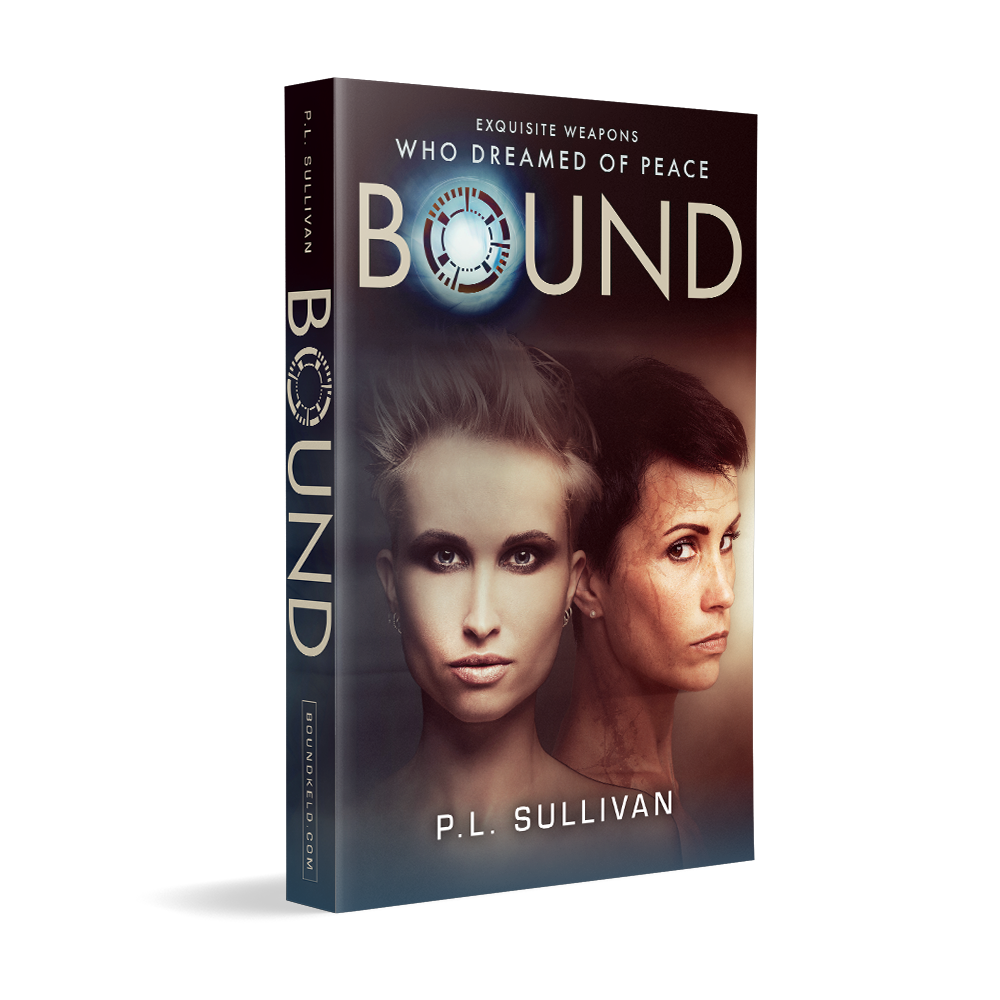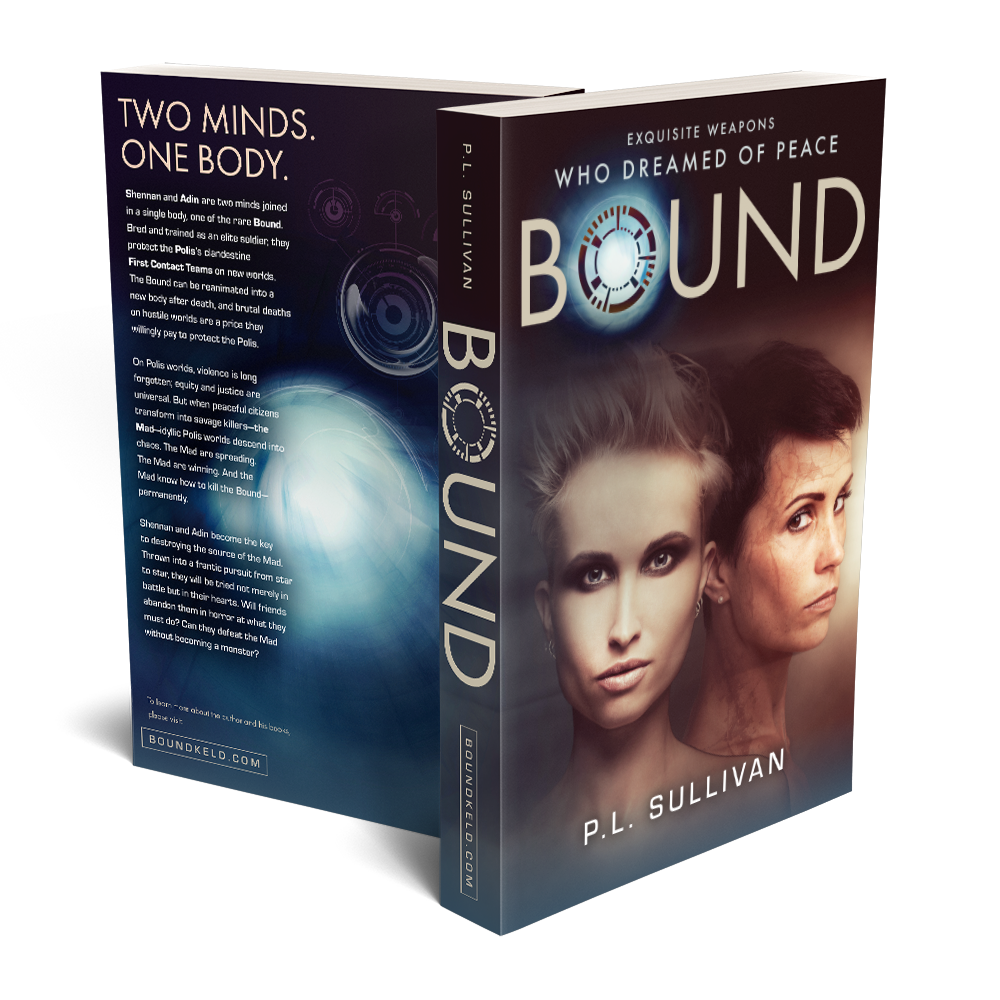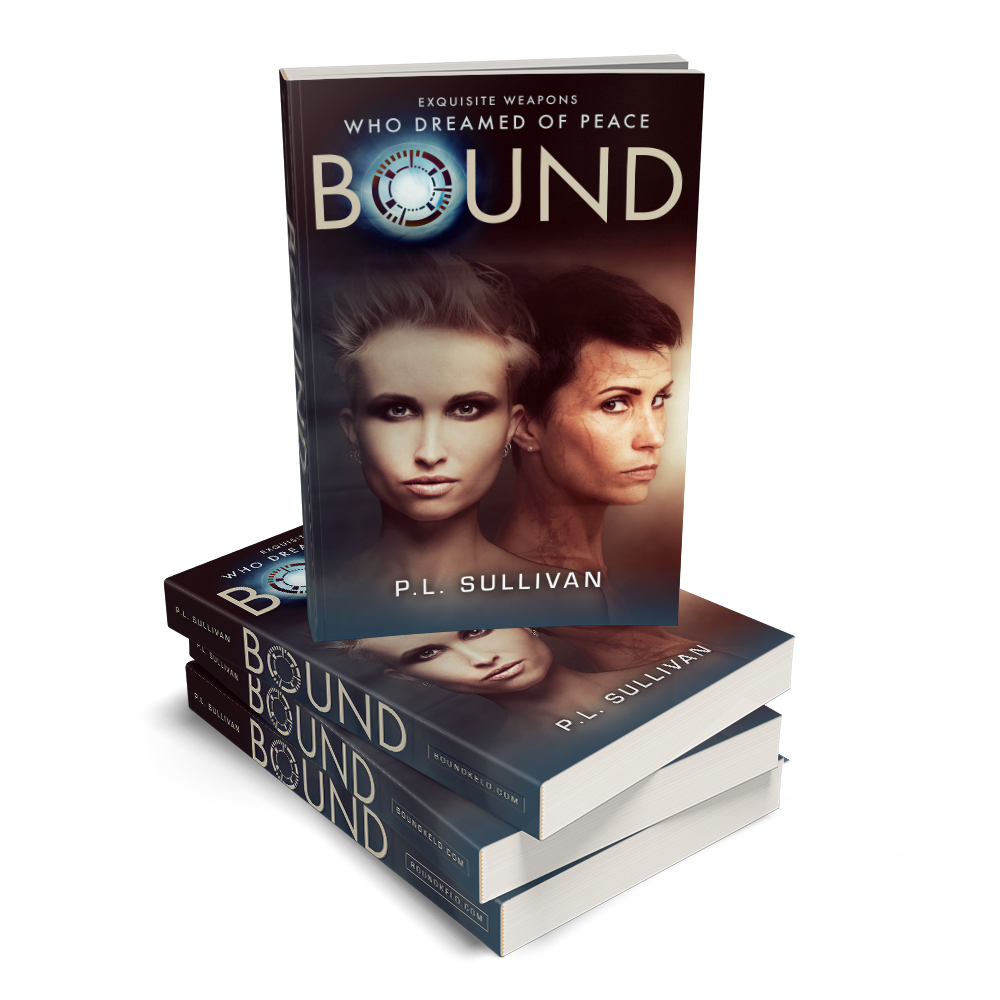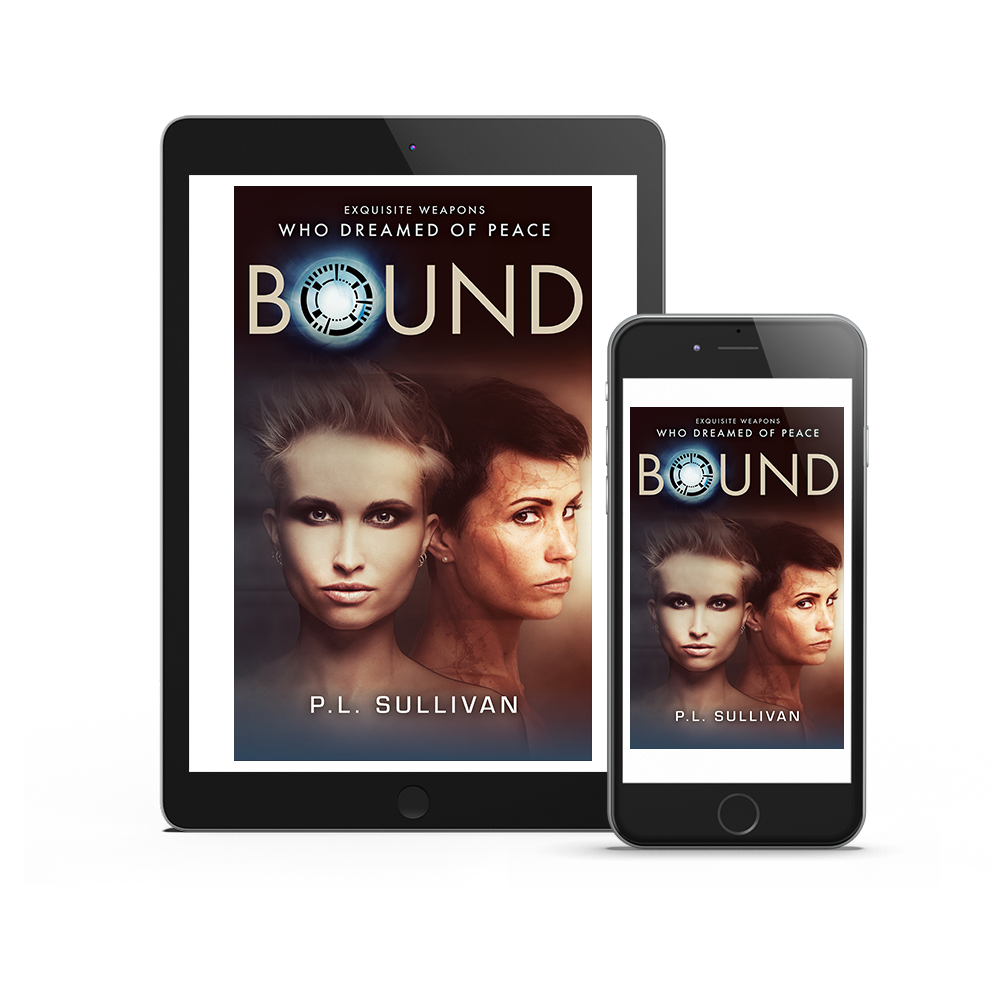"A brilliant tale offering a universe and protagonist that are impressively well realized."
–Kirkus Reviews
Critical Reviews for Bound.
Kirkus Reviews
In this debut SF novel, a powerful warrior with two complex personalities must discover and destroy the source of a dangerous infection.
The Polis federation, consisting of various intelligent species on more than 10,000 planets, knows no crime because of its members’ unconscious neural links to the Consensus, a shared morality. In case of a threat, the federation can also activate some underlying genes to engender Keld—strong, agile warriors capable of killing. Rarest of this rare breed are the Bound Keld, who can regenerate after their deaths into new lives.
These Keld have two personalities, or rather two aspects of the same personality, in one body. Usually these personalities alternate with each reanimation, but Adin Rayne went through a tortuous process in order to become fused with Shennan, her other half. Only one can be ascendant (in charge of the body) at a time, but they’re mutually aware and communicative.
Although she’d rather be a peacemaker, as a warrior with the Keld Special Action force, she’s charged with killing worlds, if need be, to protect the federation.
On five planets, a new and unprecedented threat has arisen called the Madness, seemingly some type of infection that induces ordinary people to carry out deadly attacks despite the Consensus. In her battles, Adin discovers she has a unique ability to perceive the Mad, allowing her to track down the true nature of this infection and its source, which must be annihilated before the whole Consensus is contaminated.
Her dangerous, bold endeavors have severe physical and emotional consequences; as if that wasn’t difficult enough, the Prospect planet Moton has been infected while its scientists are developing technology they’re not socially advanced enough to handle, a double threat. If Keld Special Action can’t wipe out the Madness on Moton, the planet may have to be destroyed.
In his book, Sullivan presents an intricate two-in-one main character whose psychology is as compelling as her warrior prowess.
Adin and Shennan complement each other but have different preferences and strengths.
Adin is reserved and cool, for example, while Shennan is more optimistic and gregarious.
After each death, the personality that was ascendant retires to recoup, allowing the other to come forward and choose the preferred body type for that incarnation (complicating their romances).
Adin/Shennan’s conflict between wanting to make peace while required to make war gives the character additional depth, and the worldbuilding is equally intricate and well thought out.
The author gives attention to the kinds of differences many SF writers overlook, such as how diverse the cultures and languages can be and the ramifications of that variety.
On Pellegro, for example, the four-caste system means a strike team doesn’t have enough taps for cable-fiber bundles, with the group expecting one bundlebut getting four: “Who would have thought they wouldn’t even allow their data to touch?” This thoughtfulness is matched by exciting, dynamic action scenes with an array of weaponry and tactics, all described with crystal clarity while fully imparting their urgency and danger.
A brilliant tale offering a universe and protagonist that are impressively well realized.
BookLife
Despite the vast and diverse world in Sullivan’s adult debut, it is a rare thing to be Bound, to have two independent minds in one body; it is rare even for the Keld, a species of soldiers who are already an anomaly because they can kill. Adin and Shennan are the Keld’s star asset due to their bound nature: when they die, they’re reanimated, and, while the one that died recovers, the other takes over their body. Consequently, Adin and Shennan are destined to protect the Polis, people that have conformed to a system, the Consensus, that biologically instills morality in them. The Polis know no violence. So, when some Polis start randomly turning into the Mad and carrying out interplanetary terror attacks, Adin and Shennan are duty-bound to eradicate the Mad at all costs. This will require their iron will, their dedication, and, most importantly, their utilitarianism. In the end, will it be the Mad who rip away that Adin and Shennan hold dear, or will it be their own actions?
Adin and Shennan work on a series of related but smaller missions that run the gamut of security to spy work, creating more of a slow burn than a thrill ride. This planet-hopping military mission spree is sure to tickle any intellectual’s brain stem. From how Adin’s and Shennan’s dual nature affects their life and abilities, to themes of colonization, social manipulation, and evolution, there’s a lot to chew on. A lot of this is explained through scientific jargon. While this might titillate some, it may dull the emotional impact for others. Additionally, action scenes focus slightly more on strategy than emotion or sensory detail, giving the harrowing bouts with death an almost video-game quality. Sometimes, events aren’t told as they occur and are instead casually revealed after, which can lead to some confusion and detachment.
But readers will be pulled right past those potential barriers into Sullivan’s frank and realistic portrayals of trauma and duty. The novel explores the hard calls people make to protect the whole, even if they have to sacrifice their minds, bodies, and relationships. And this follows through right to the end: there are no easy answers, no easy-to-swallow morals to find here. Adin and Shennan are put through the wringer and go back for more. They’re complicated and broken, torn between peace and violence’s role in it. Their relationships are messy as well, and they must do unspeakable things for the same people who reject them for it. This thought-provoking military sci-fi demands, and rewards, anyone’s full attention.
Takeaway: Somewhat heady but pulling no emotional punches, this sci-fi space mission will prompt readers to ponder big moral questions.
Great for fans of: John Steakley’s Armor, Orson Scott Card’s Ender’s Game.





